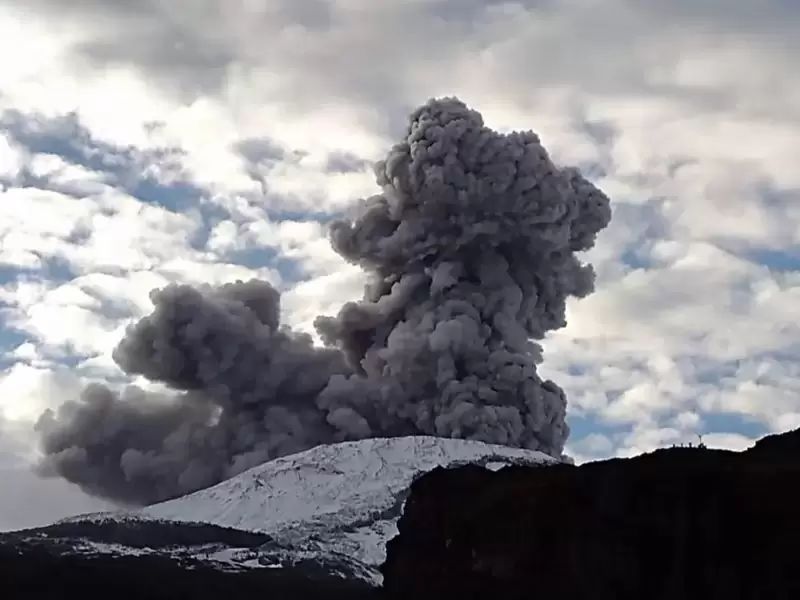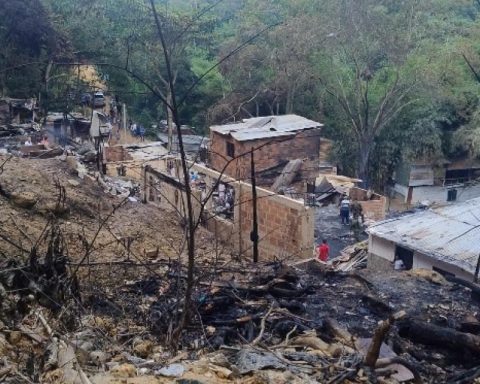Since March 30 at night, and due to the considerable increase in earthquakes the Nevado del Ruiz volcano located on the Central Cordillera in the limits of Tolima and Caldas, from the Colombian Geological Service (SGC) they changed their level of activity from yellow to orange.
However, there are still many doubts among the public about what this orange alert means, the risks of an eventual eruption and the municipalities that would be affected.
It may interest you: Video: The shocking images of the Nevado del Ruiz volcano emitting enormous amounts of ash
What’s going on?
The Nevado del Ruiz is a volcano that It has been erupting for about 10 years, but all the eruptions it has made in this period have been minor. and its affectation has been limited to ash fall in different places depending on the direction of the wind.
However, since March 24, 2023, the seismic activity on the southern flank of the volcano began to increase significantly and March 29 saw the largest number of daily earthquakes recorded since its seismic activity began to be monitored in 1985.
Why the earthquakes?
The most probable is that it is a magmatic intrusion, that is, a process by which magma moves from a deeper source towards the surface. In this process, earthquakes are generated. The most likely option is that the magma is moving through one of the main fault systems in Colombia: La Palestina., where the volcanic chain of the Los Nevados National Natural Park is located. La Palestina is one of the magma ascent routes for the Nevado del Ruiz volcano, so it is believed that a portion of magma is pushing from the southern part of the volcano towards the crater.
Will there be an eruption?
Scientifically it is not possible to know exactly what will happen to the Nevado del Ruiz volcano. Although the current level of activity indicates that there could be a bigger eruption than there has been in the last 10 years, this could also return to yellow activity level in case the seismic records and movements decrease. In fact, this has happened before.
In this case it is important to emphasize that The activity of the volcano in orange level can fluctuate and at times decrease compared to previous days, without this meaning that the volcano has returned to a lower level of activity. To change the level and return to the yellow level, a prudential time is required where trends and patterns can be observed that allow us to infer the possible decrease in activity, which is why the level of activity of the Nevado del Ruiz volcano will remain at the orange level for several weeks. During this time, in the event of an acceleration of processes suggesting an imminent eruption or the eruption itself occurring, the activity level will be changed to red level.
What would the eruption be like?
Just as scientifically it is not possible to know exactly when a volcano will erupt, nor is it possible to know precisely what that eruption would be like. What we know is that Nevado del Ruiz is an explosive type volcano (its eruptions imply the fracturing of rock and the expulsion of it together with gases and fluids at high speeds and temperatures), whose most recent eruptive history marked us as a country with the Armero tragedy, which left 25,000 people dead.
It may interest you: Possible eruption of the Nevado del Ruiz Volcano: evacuation routes in Tolima are collapsed
In that eruption, the volcanic phenomena that occurred were mostly lahars or mudflows. (commonly known as ‘avalanches’), as well as ash fall and pyroclastic flows – a mixture of extremely hot gases and solid particles commonly referred to as ‘fiery clouds’.
















